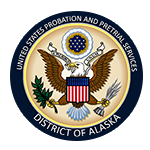The federal presentence investigation report is a confidential document. The first draft of the report (often referred to as the “initial disclosure”) is provided only to the attorney for the government and the attorney for the defendant. The defendant’s attorney should schedule a time to provide the defendant a copy of the report and review it with him/her. At this time, either attorney or the defendant may file objections to any information contained in the report. Each attorney may contest the accuracy of the information contained in the presentence report or the application of the sentencing guidelines to that information. The probation officer will list and provide a response to all objections received in an Addendum to the presentence report. Once the probation officer has completed the Addendum, the full report and Addendum is disclosed to the attorney for the government, the attorney for the defendant, and the sentencing judge.
After sentencing if a defendant is ordered to serve a term of imprisonment, the presentence report will be provided to the Federal Bureau of Prisons to assist the Bureau in classifying the defendant to the appropriate security level, providing needed prison programs, and for release planning. Although the presentence report is provided to the Bureau of Prisons, it remains an official court document and may not be re-disclosed by the Bureau of Prisons to any third party. Following release from custody, the U.S. Probation Officer uses the presentence report and information from the Bureau of Prisons to determine risk, needs, and focus areas for the defendant while on supervised release.
Disclosure of the presentence report may only be done at the recommendation of the probation office and pursuant to court order allowing the disclosure.
